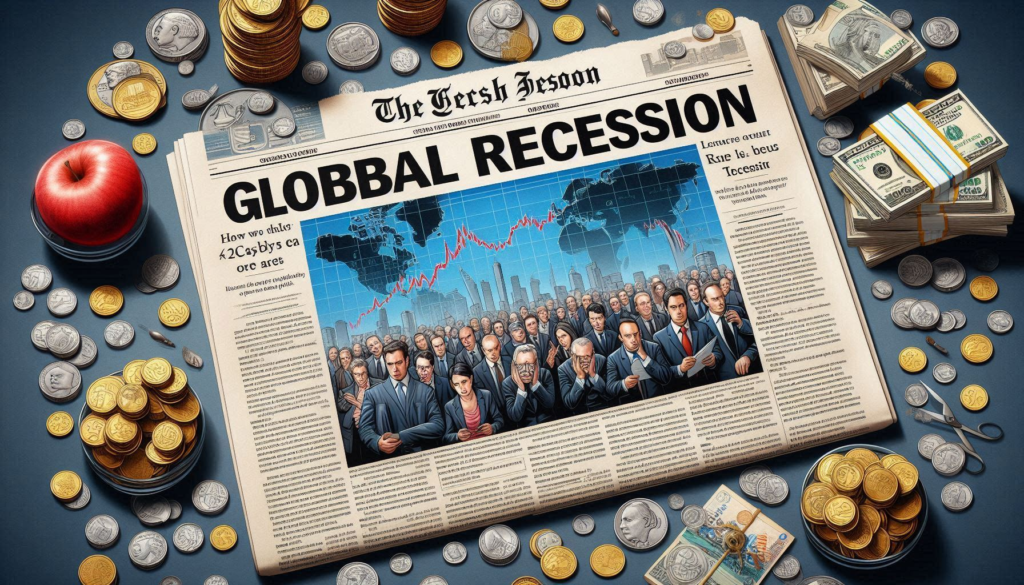Introduction
The global recession of 2008, often referred to as the Great Recession, marked a significant period of economic downturn that had far-reaching effects on economies worldwide. Originating in the United States, the crisis quickly spread across the globe, leading to widespread financial instability, unemployment, and a fundamental reevaluation of economic policies and financial regulations.
Causes of the Global Recession
The roots of the 2008 recession can be traced to several key factors, primarily in the financial and housing sectors:
- Subprime Mortgage Crisis: Financial institutions in the U.S. engaged in excessive lending to borrowers with poor credit histories, known as subprime mortgages. These loans were often bundled into mortgage-backed securities (MBS) and sold to investors.
- Housing Bubble: The availability of easy credit fueled a housing bubble, characterized by rapidly rising home prices. When the bubble burst, home values plummeted, and many homeowners found themselves with mortgages exceeding the value of their homes.
- Financial Deregulation: Deregulation in the financial industry, including the repeal of the Glass-Steagall Act, allowed banks to engage in high-risk activities. The lack of oversight contributed to the proliferation of complex financial instruments and increased systemic risk.
- Leverage and Risk Management Failures: Financial institutions operated with high levels of leverage, borrowing heavily to invest in high-risk assets. Inadequate risk management practices exacerbated the impact of declining asset values.
- Global Financial Integration: The interconnectedness of global financial markets meant that the crisis quickly spread beyond the U.S., affecting economies worldwide.
Consequences of the Recession
The consequences of the 2008 recession were profound and widespread, impacting various aspects of the global economy:
- Economic Contraction: The global economy experienced a significant contraction, with the International Monetary Fund (IMF) estimating a 0.1% decline in global GDP in 2009. Advanced economies were particularly hard hit, with the U.S. economy shrinking by 2.5% in 2009.
- Unemployment: Unemployment rates soared as businesses cut back on production and laid off workers. In the U.S., the unemployment rate peaked at 10% in October 2009. Other countries, such as Spain and Greece, saw even higher unemployment rates, exacerbating social and economic challenges.
- Financial Sector Collapse: Major financial institutions, including Lehman Brothers, Bear Stearns, and AIG, either collapsed or required significant government intervention to prevent failure. The banking sector’s instability led to a severe credit crunch, restricting access to loans for businesses and consumers.
- Government Bailouts and Stimulus Packages: Governments worldwide implemented massive bailout and stimulus packages to stabilize their economies. In the U.S., the Troubled Asset Relief Program (TARP) and the American Recovery and Reinvestment Act injected over $1 trillion into the economy.
- Housing Market Decline: The housing market saw a sharp decline in prices and a surge in foreclosures. Millions of Americans lost their homes, and housing markets in countries like Spain and Ireland also experienced significant downturns.
- Sovereign Debt Crises: Several countries, particularly in the Eurozone, faced sovereign debt crises as government debts ballooned due to bailout costs and declining tax revenues. Greece, Ireland, and Portugal required international financial assistance to avoid default.

Changes and Recovery Post-Recession
The aftermath of the Great Recession led to significant changes in economic policies, financial regulations, and the broader economic landscape:
- Stronger Financial Regulations: In response to the crisis, governments and regulatory bodies implemented stricter financial regulations. The Dodd-Frank Wall Street Reform and Consumer Protection Act in the U.S. aimed to reduce risk-taking by financial institutions and increase transparency.
- Central Bank Policies: Central banks, including the Federal Reserve and the European Central Bank, adopted unconventional monetary policies such as quantitative easing to stimulate economic growth and stabilize financial markets.
- Focus on Fiscal Responsibility: Governments worldwide emphasized fiscal responsibility and austerity measures to reduce budget deficits and public debt. However, these measures often faced criticism for hindering economic recovery and exacerbating social inequality.
- Shift in Global Economic Power: Emerging economies, particularly in Asia, demonstrated resilience and quicker recovery from the recession. Countries like China and India continued to grow, contributing to a shift in global economic power dynamics.
- Technological Advancements: The recession accelerated technological advancements and the adoption of digital technologies. Companies and consumers increasingly turned to online platforms, e-commerce, and remote work, trends that have continued to shape the global economy.
- Economic Inequality: The recession highlighted and, in some cases, exacerbated economic inequality. While financial markets and corporate profits rebounded, wage growth for many workers remained stagnant, leading to increased calls for inclusive economic policies.
Conclusion
The global recession of 2008 was a pivotal event that reshaped the global economy, highlighting the interconnectedness of financial markets and the importance of robust regulatory frameworks. While the recovery has been uneven, the lessons learned have led to significant changes in economic policies and financial practices. As the world continues to navigate new challenges, the legacy of the Great Recession serves as a reminder of the need for vigilance, innovation, and resilience in the face of economic uncertainty.












